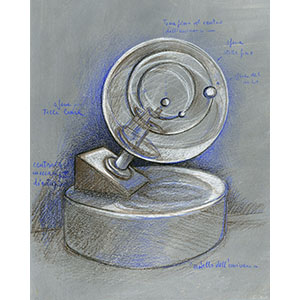Archimedes’ planetarium
Cicero said that the spoils of war brought back to Rome by Marcellus, victor of Syracuse, included a beautiful a mechanical planetarium made by Archimedes. As well as the eclipses, it demonstrated the daily movements of the five planets thought to rotate around the Earth. Claudianus, a poet who lived around 300 AD, described Jupiter's surprise when he saw Archimedes' mechanical universe contained in a glass globe. This reconstruction shows the daily motion of the stars around the Earth, the eclipses of the Sun and Moon and their movement along the ecliptic, all visible inside a glass sphere representing the universe. The mathematician Pappus of Alexandria makes reference to the mechanics' scholars who were able to portray the path of the planets and he names Archimedes as the author of a similar device.
In-depth
Passionate about astronomy and an admirer of the genius of Archimedes, who he described as a "divine mind," Cicero provided a detailed description of the mechanical planetarium created by Archimedes. As well as simultaneously demonstrating the motions of the celestial bodies, as then perceived, this device explained the eclipses of the Sun and Moon. When Cicero was quaestor in Sicily (75 BC) and visited Syracuse, he found and recognised Archimedes' tomb by the presence of a sphere and cylinder, an allusion to the title of one of Archimedes' favourite works.




